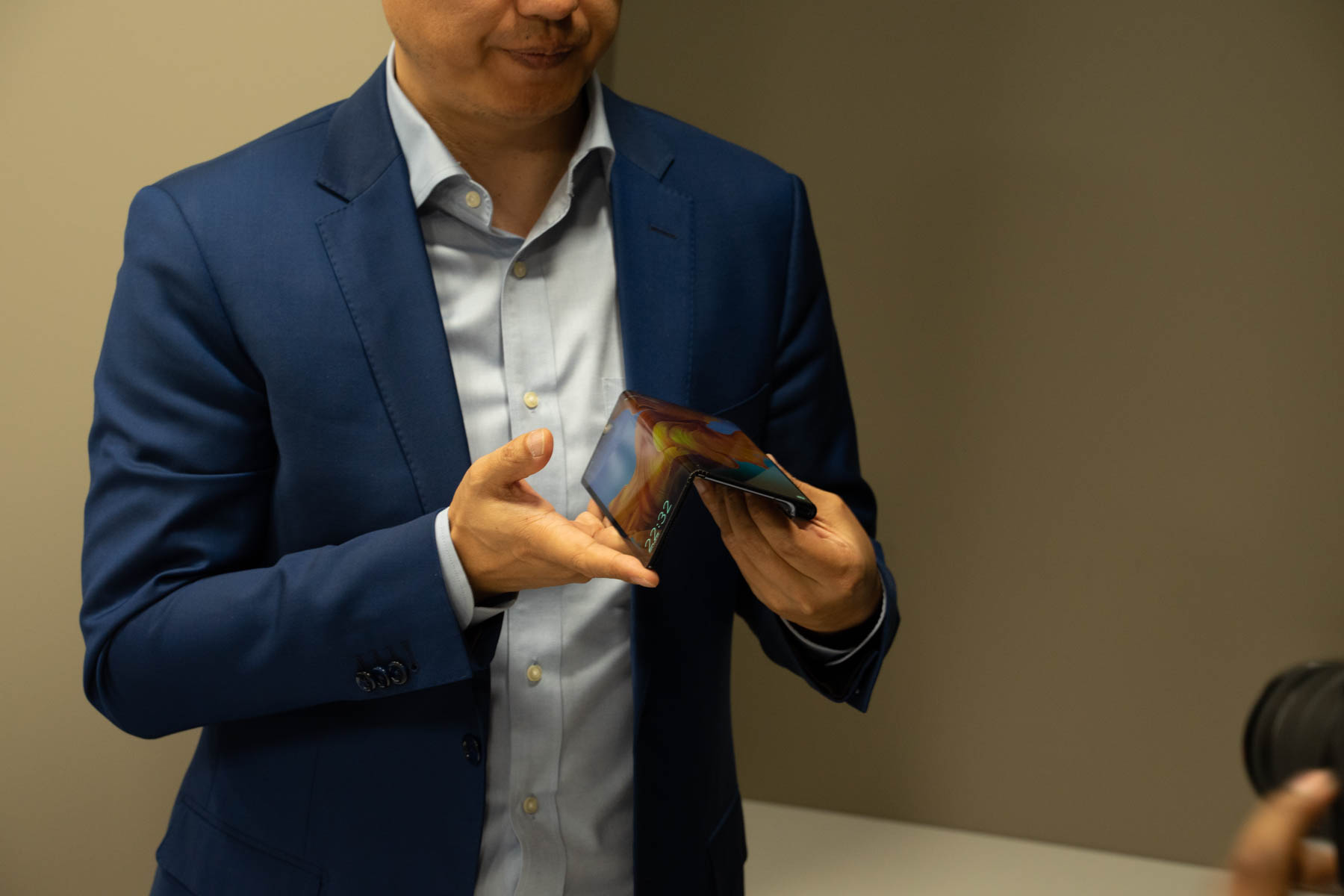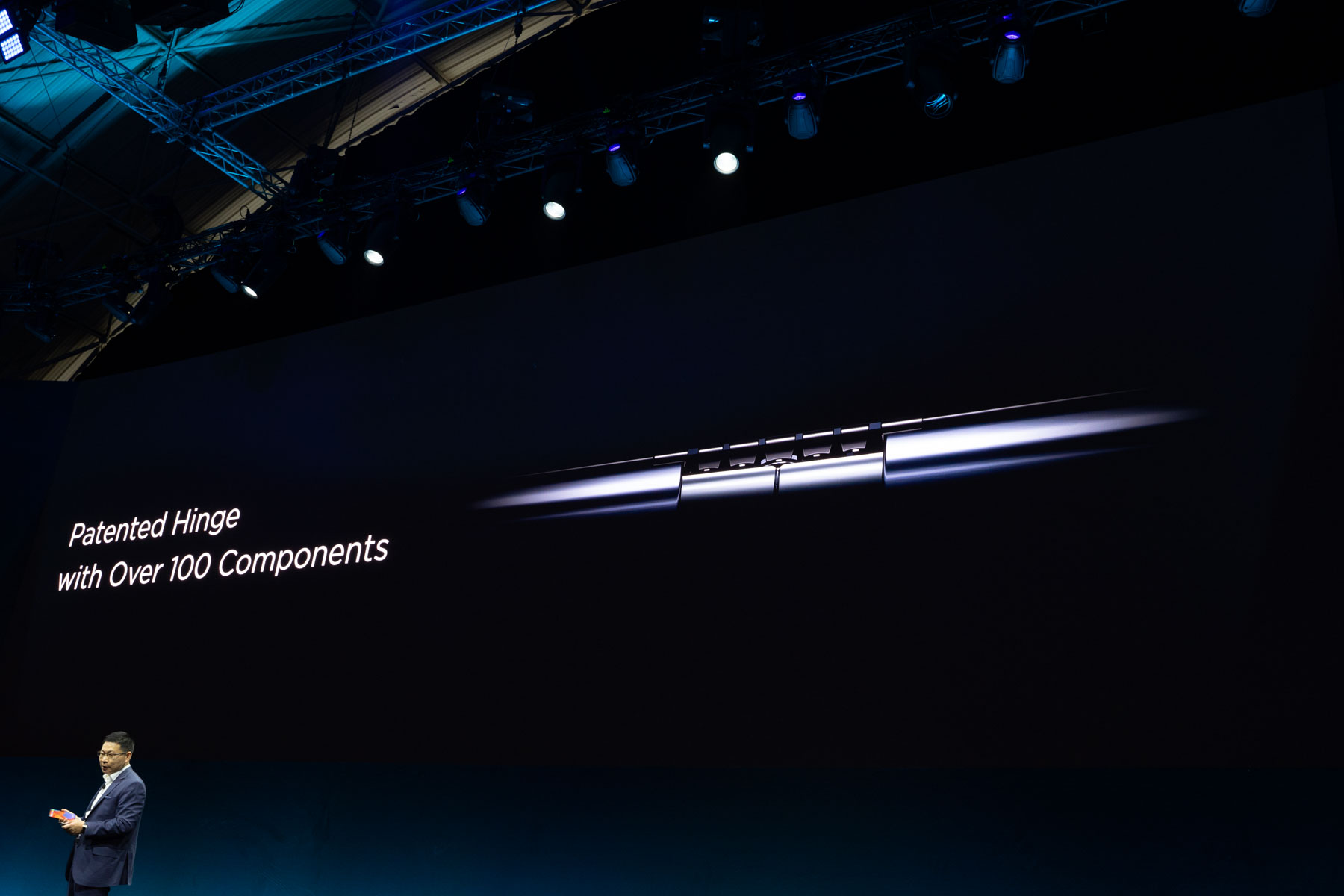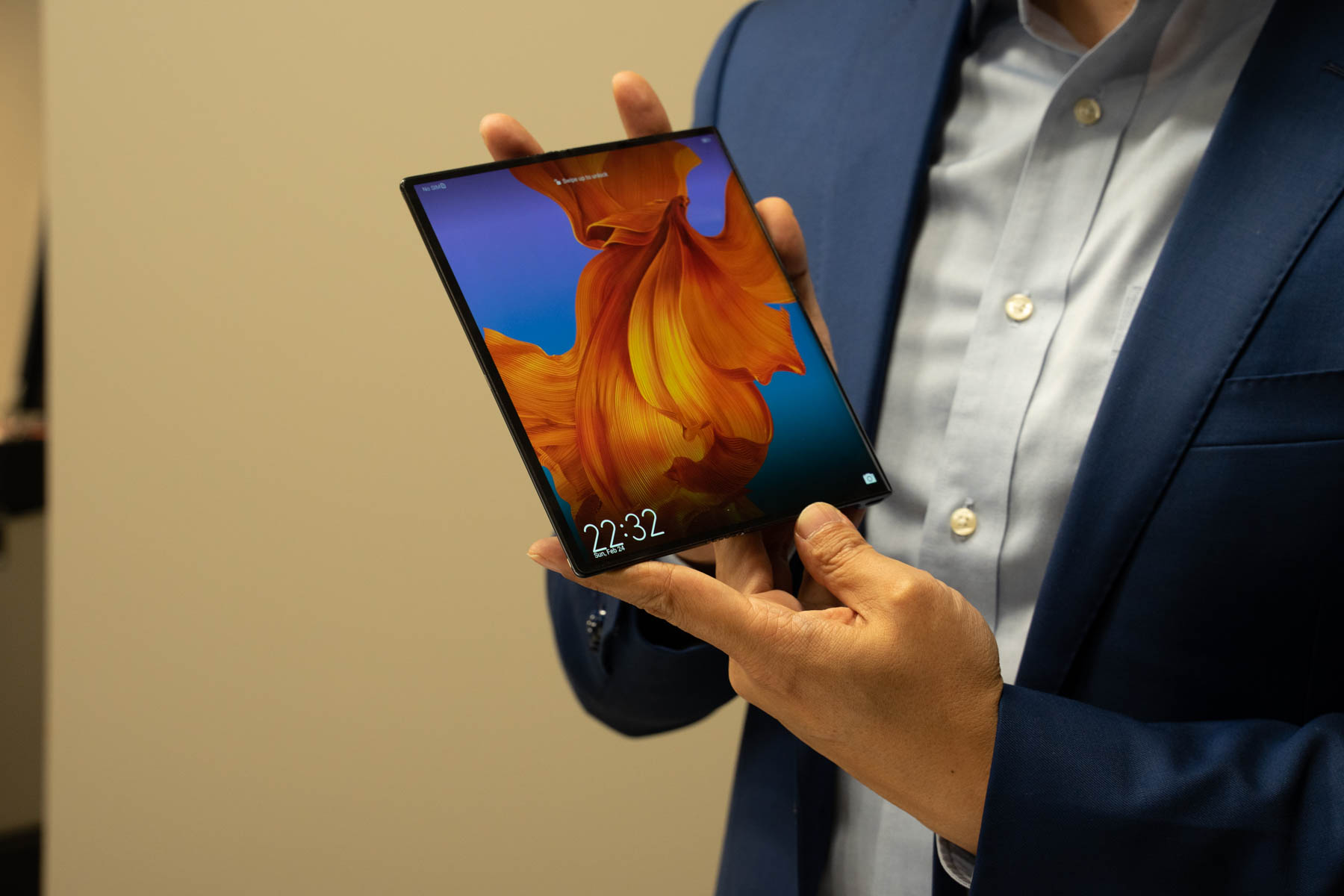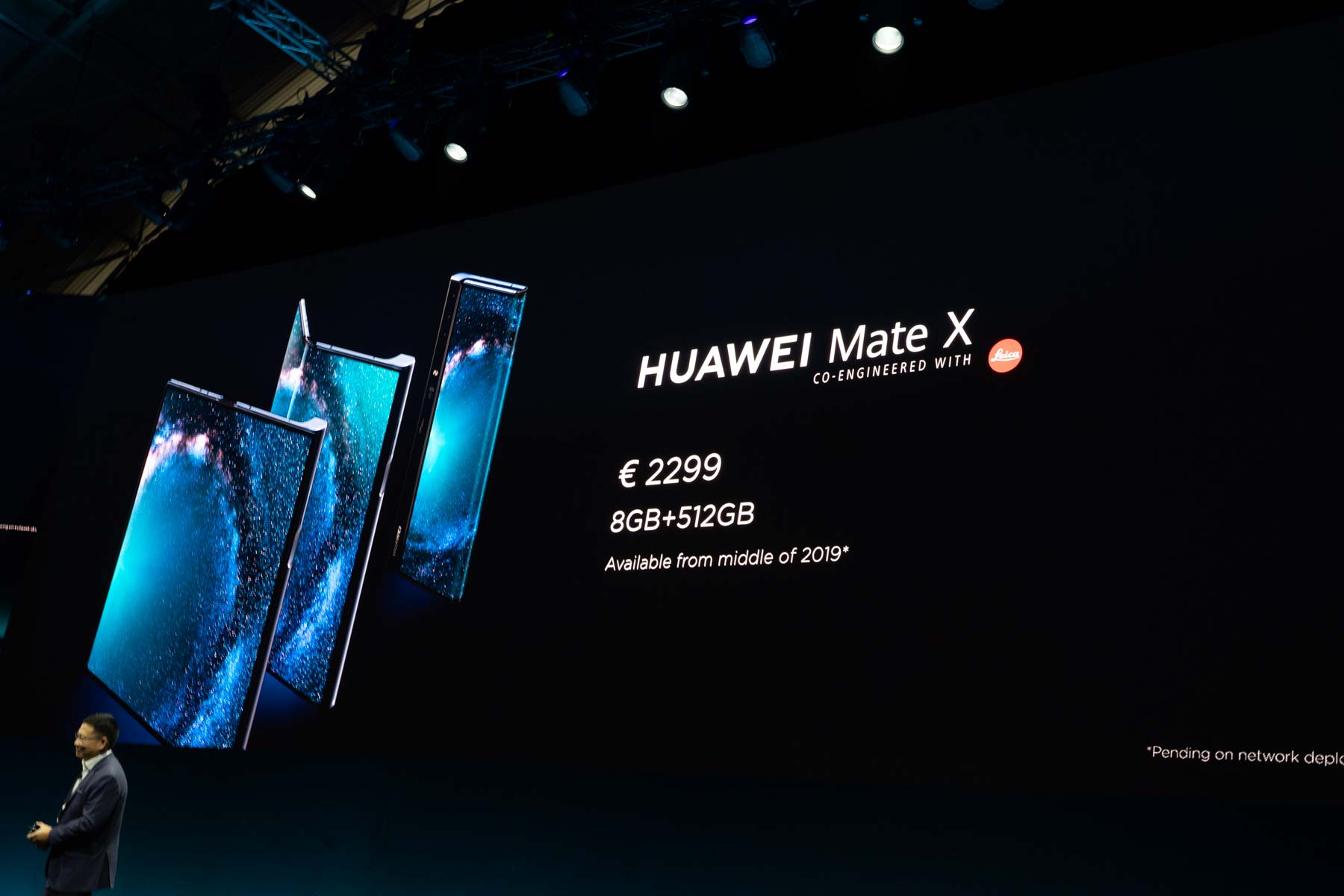The Huawei foldable phone has finally made its debut at Mobile World Congress 2019 as the Huawei Mate X.
ITWC had interviewed Yanmin Wang, president CEE & Nordic Region for Huawei’s Consumer Business Group, and had access to a behind-the-scenes photo shoot.
The Huawei Mate X sports a different design compared to its competitors. The first thing that jumped out was just how thin the device really is. Folded together, it measures only 11mm and just 6.9mm unfolded.
Huawei accomplished this by reducing the width of one half of the display and inserted a ridge along on the right edge of the phone. The of the ridge holds the charging connector and a vertical camera array, both of which pose limitations to the display’s thickness.
It’s stressed during the interview that the phone does not have a gap when folded. The secret is in the hinge. Huawei’s patented hinge design has over 100 components and eliminates the gap completely.
In what’s called Falcon Wing design, the display folds inwards, keeping the two halves exposed when closed. In the folded mode, the front display measures 6.6″ and a resolution of 2,480 x 1,148p, while the rear measures 6.3″ with a 2,480 x 1,052p resolution. The two halves combine into an 8.4″, 2,480 x 2,200 display when unfolded. The display has no cut out to obstruct any display element.
Like the other foldable phones, the Mate X holds two batteries that total to a 4,500 mAh capacity. Due to the larger display, its endurance likely will not match that of a phone with a smaller display, such as the Huawei Mate 20 Pro.
Powering the massive display is Huawei’s 7nm Kirin 980 SoC, the same chip that powers the Huawei Mate 20 Pro.
Because there’s now a display in the back, the rear camera can also act as the front camera. In addition to higher quality selfies, it also allows picture preview on the other half of the display. Huawei didn’t go into the specifics about its specification, only mentioning that it uses Leica lenses and designed by Red, one of the most prestigious video equipment makers.
A large display loses its meaning if it doesn’t add any tangible benefits to workflow, which is why Huawei demonstrated side-by-side app operation and promised a more natural experience in Microsoft Office.
Being a flagship device, there’s no way that the Mate X would miss out 5G. The particular 5G chip it uses is the Balong 5000 and quad antennas. The system has full massive MIMO and mmWave support. Huawei promises a maximum throughput of 4.6Gbps at sub-6GHz frequencies, twice that of the Qualcomm Snapdragon X50.
The Huawei Mate X will only come in Interstellar blue with a fully protective case being an optional purchase. Units should hit select outlets beginning in June for an eye-watering $2,299 Euros – or just under CAD$3,500.
Tom Li’s travel and accommodations to cover Mobile World Congress 2019 are paid for by Huawei. Huawei did not have a chance to review or approve content before publication.
















